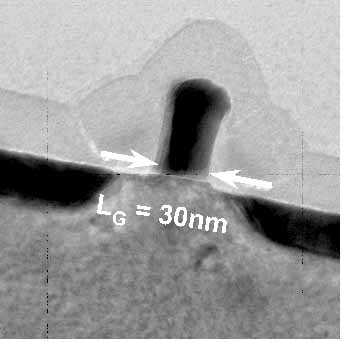The future of Intel's manufacturing processes
by Anand Lal Shimpi on December 11, 2000 1:23 AM EST- Posted in
- CPUs
Tying it all together
Currently Intel’s processors are manufactured on a 0.18-micron process, and as we just discussed that refers to the circuit size. Next year, Intel will be shipping their first 0.13-micron parts in the first half of 2001 (we’re expecting that in the second quarter). As Intel has done for the past two generations of processors, this 0.13-micron process will debut first on their mobile processors.
The yield on any given process is lower upon the process’ introduction and increases as the manufacturing of the process matures. This is why Intel debuts all new manufacturing processes in a lower demand area (mobile processors) before moving it over to the desktop and workstation processors as well.
Before we get to what this means in terms of Intel’s future processors, let’s take a look at the actual reduction in size that the 0.13-micron process brings us. This development comes from Intel’s largest entity with 4000 workers: the Technology and Manufacturing Group (TMG).
It is from this group that we not only get the improved manufacturing processes, but we also get quite a bit of materials research from this part of Intel as well. Such as the decision to make the move to Copper interconnects with the 0.13-micron process, a decision that AMD actually beat Intel to with their 0.18-micron process.
TMG’s forecasts indicate that Intel’s manufacturing goal is for a 30% shrink in transistor size every 2 years. This results in the manufacturing forecast represented below:
|
Manufacturing
Process Forecast
|
|||||||
|
Actual
|
Forecast
|
||||||
| Process Name |
P852
|
P854
|
P856
|
P858
|
P860
|
P1262
|
P1264
|
| Production |
1993
|
1995
|
1997
|
1999
|
2001
|
2003
|
2005
|
| Circuit Size |
0.50µm
|
0.35µm
|
0.25µm
|
0.18µm
|
0.13µm
|
0.10µm
|
0.07µm
|
| Gate Length |
0.50µm
|
0.35µm
|
0.20µm
|
0.13µm
|
0.07µm
|
0.05µm
|
0.03µm
|
To illustrate exactly how small a the 0.07-micron process is, Intel uses the comparison: transistors as small as DNA. While that statement does have its flaws, let's have a look at a picture of this comparison first before extracting the truth from it.

John Jackson & Inman. Gene
1989 84 221-226.
Here we have a picture of a 0.01-micron (10nm) Gold particle attached to a Z-DNA antibody.

And now we have a transistor with a gate length of 30nm or 0.03-microns, just three times as the Gold particle attached to the Z-DNA antibody from the picture above.










14 Comments
View All Comments
Dr AB - Saturday, May 9, 2020 - link
Hahahah its funny to read that they were actually expecting 8-10 Ghz after 2005 and wondering what humanity would do with that clock speed ... One thing that they completely forgot .. "PHYSICS" XDDr AB - Saturday, May 9, 2020 - link
10 GHz running at < 1 volt. Lol so unrealistic ambitions.Dr AB - Saturday, May 9, 2020 - link
Ironically "Facts from Intel" all turned out to be false xDjourneystocktrader - Sunday, March 14, 2021 - link
Yeah does not look like this is ever gonna happen within the next 10 years lol boy were they off, We took a different turn. I cannot believe this message board is still up lol. I will be back in ten years to tell you how we made out lol!!!